Related Research Articles
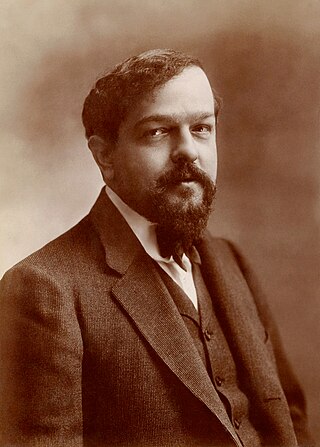
(Achille) Claude Debussy was a French composer. He is sometimes seen as the first Impressionist composer, although he vigorously rejected the term. He was among the most influential composers of the late 19th and early 20th centuries.

Jean Nicolas Arthur Rimbaud was a French poet known for his transgressive and surreal themes and for his influence on modern literature and arts, prefiguring surrealism. Born in Charleville, he started writing at a very young age and excelled as a student, but abandoned his formal education in his teenage years to run away to Paris amidst the Franco-Prussian War. During his late adolescence and early adulthood, he produced the bulk of his literary output. Rimbaud completely stopped writing literature at age 20 after assembling his last major work, Illuminations.

Paul-Marie Verlaine was a French poet associated with the Symbolist movement and the Decadent movement. He is considered one of the greatest representatives of the fin de siècle in international and French poetry.

André Caplet was a French composer and conductor of classical music. He was a friend of Claude Debussy and completed the orchestration of several of Debussy's compositions as well as arrangements of several of them for different instruments.
Clair de Lune is French for "Moonlight". It may refer to:
Suite bergamasque is a piano suite by Claude Debussy. He began composing it around 1890, at the age of 28, but significantly revised it just before its 1905 publication. The popularity of the third movement, Clair de lune, has made it one of the composer's most famous works for piano, as well as one of the most famous musical pieces of all time.
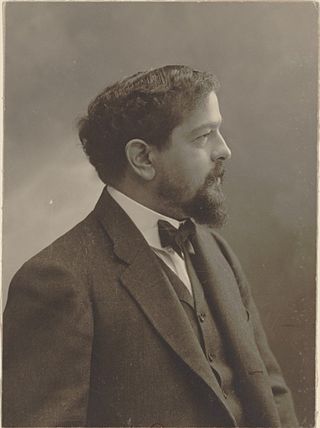
Prélude à l'après-midi d'un faune, known in English as Prelude to the Afternoon of a Faun, is a symphonic poem for orchestra by Claude Debussy, approximately 10 minutes in duration. It was composed in 1894 and first performed in Paris on 22 December 1894, conducted by Gustave Doret. The flute solo was played by Georges Barrère.
A mélodie is a form of French art song, arising in the mid-19th century. It is comparable to the German Lied. A chanson, by contrast, is a folk or popular French song.
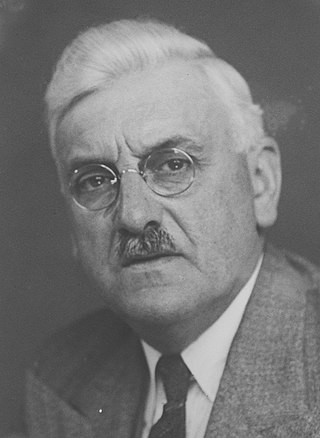
Abel-Marie Alexis Decaux was a French organist, composer, and pedagogue, best known for his piano suite Clairs de lune, some of the earliest pieces of dodecaphony.
"Chanson d'automne" is a poem by Paul Verlaine (1844–1896), one of the best known in the French language. It is included in Verlaine's first collection, Poèmes saturniens, published in 1866. The poem forms part of the "Paysages tristes" section of the collection.

"Au clair de la lune" is a French folk song of the 18th century. Its composer and lyricist are unknown. Its simple melody is commonly taught to beginners learning an instrument.
La Bonne Chanson, Op. 61, by Gabriel Fauré, is a song cycle of nine mélodies for voice and piano. He composed it during 1892–94; in 1898 he created a version for voice, piano and string quintet. The cycle is based on nine of the poems from the collection of the same name by Paul Verlaine. According to Fauré himself, the song cycle contains a number of musical themes which recur from song to song. He had devised this technique for the 1891 song cycle Cinq mélodies "de Venise", which was also based on Verlaine's poetry.

Ariettes oubliées is a song cycle for voice and piano, L. 60 by Claude Debussy, based on poems by Paul Verlaine. The work consists of six pieces, with an approximate run time of sixteen minutes.
"Clair de lune", ("Moonlight") Op. 46 No 2, is a song by Gabriel Fauré, composed in 1887 to words by Paul Verlaine.
The Petite Suite, L 65, is a suite for piano four hands by Claude Debussy. It has been transcribed many times, most notably in an orchestral version by Debussy's colleague Henri Büsser.
Guy Sacre is a French composer, pianist and musical critic.
Fêtes Galantes is a cycle of six mélodies composed by Claude Debussy to poems by Paul Verlaine. It consists of two books of three songs. The songs were composed over several years, and were premiered in 1904.
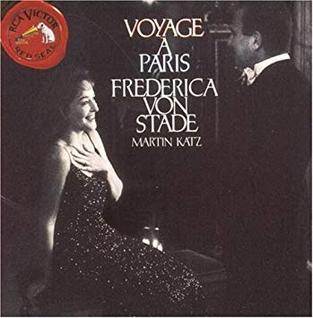
Voyage à Paris is a 70-minute studio album of French art songs performed by Frederica von Stade with piano accompaniment by Martin Katz. It was released in 1995.
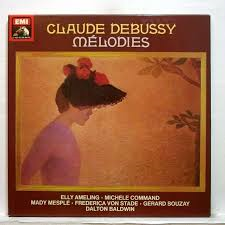
Debussy Mélodies is a 178-minute studio album of sixty of Claude Debussy's art songs, presented roughly in order of composition, performed by Elly Ameling, Michèle Command, Mady Mesplé, Frederica von Stade and Gérard Souzay with piano accompaniment by Dalton Baldwin. It was released in 1980.

Tuberose is a studio album by French singer Amanda Lear, released in October 2021 by the independent label Boomlover.
References
- ↑ "Clair de lune". One Hundred and One Poems by Paul Verlaine (a bilingual edition). Translated by Norman R. Shapiro. University of Chicago Press. 1998. ISBN 0-226-85344-6, 0-226-85345-4 . Retrieved 2017-07-08. (Only the French text is quoted here.)